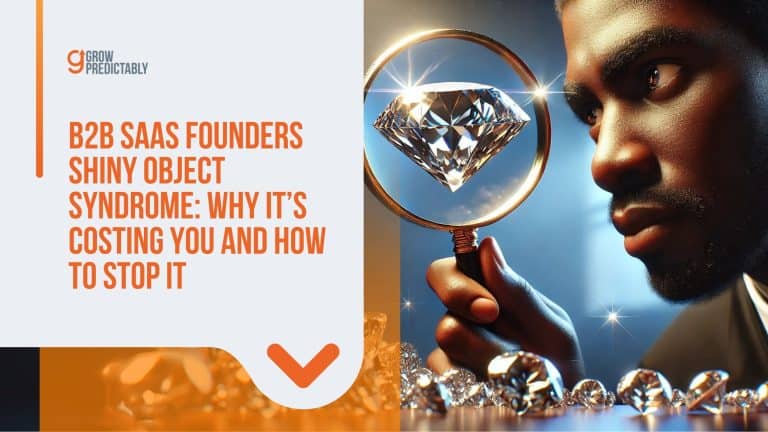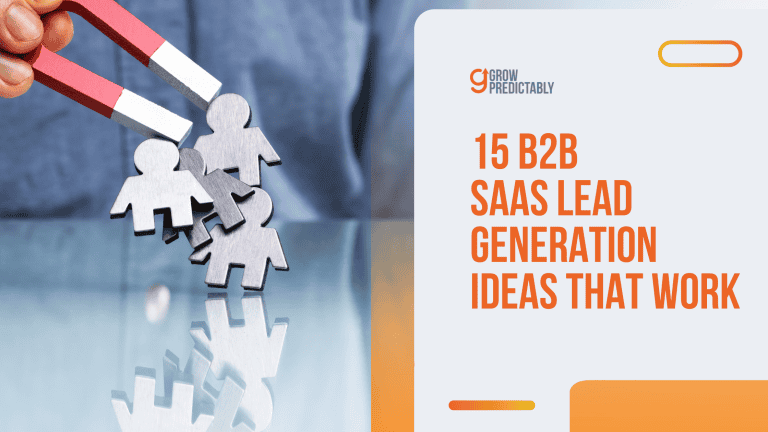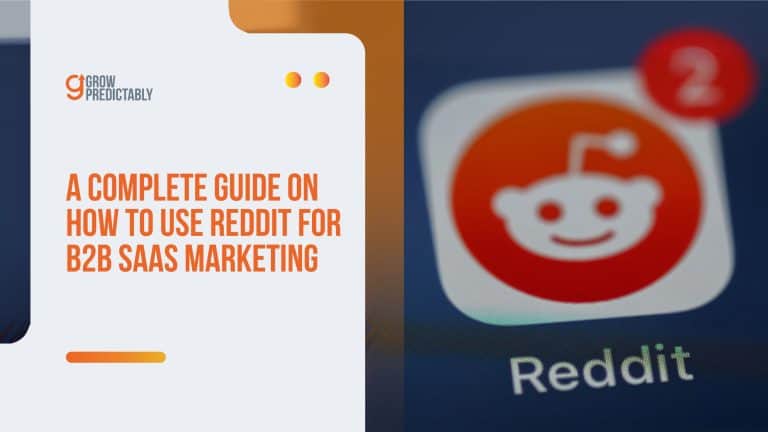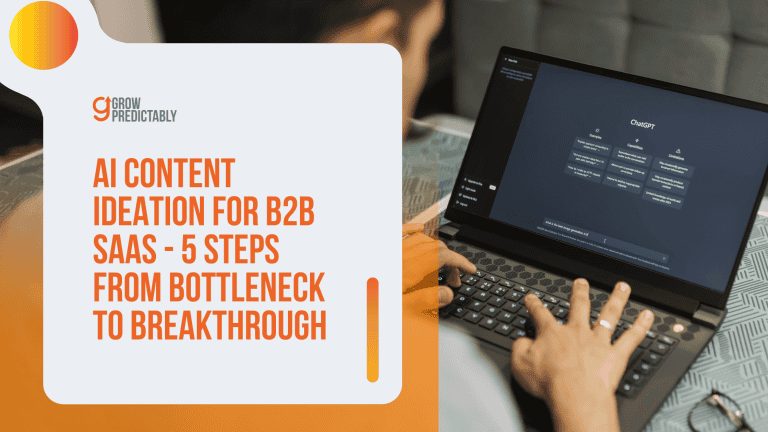How to Enrich B2B Lead Data: Top 7 Strategies for Effective Implementation
You’ve probably already collected thousands of leads.
But here’s a question—how much of that basic data is actually usable right now in terms of data quality?
B2B data decay is real, and it’s killing conversion rates.
Without knowing how to enrich B2B lead data, your sales team might as well be cold-calling the phone book.
You don’t need another tool—you need a better process.
In this guide, I’ll break down how top teams clean up their data and make it work.
Let’s make your data useful again.
What is Data Enrichment in B2B?
The goal is to turn data into information, and information into insight.”
Carly Fiorina, former CEO of Hewlett-Packard
Data enrichment isn’t fancy marketing jargon – it’s the backbone of any serious B2B operation.
It’s taking your existing customer data and enriching it with additional layers of information from third-party sources.
Think of it as upgrading from a flip phone to a smartphone.
Same basic function, exponentially more capability.
Your first-party data is just the starting point, and enriching existing data with third-party sources transforms basic contact records into comprehensive customer profiles that drive real business decisions.
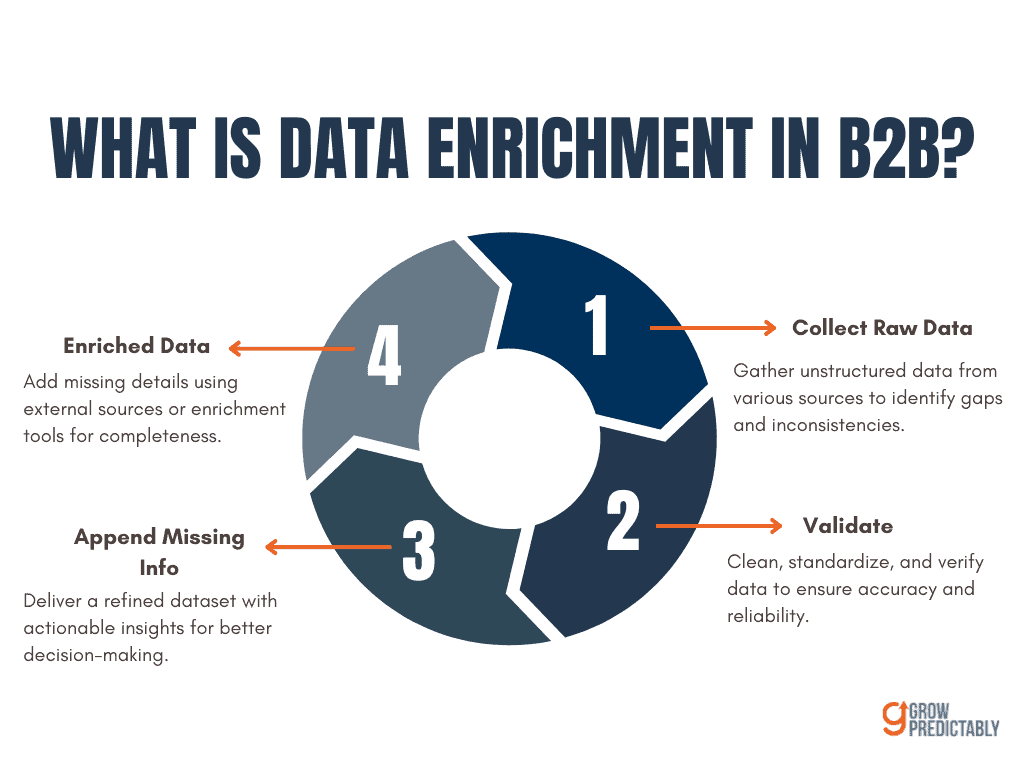
Data integration plays a crucial role in this process by seamlessly combining multiple data sources to enrich your existing data.
According to Gartner, organizations that successfully leverage data enrichment see a 35% improvement in sales productivity and a 30% reduction in cost per lead (Source).
Everything that matters:
- Contact details: Direct dials, verified emails, and communication preferences
- Company information: Industry classification, employee count, revenue figures, tech stack
- Behavioral signals: Website visits, content downloads, product usage patterns
- Intent data: Purchase signals, competitor research, solution evaluation activities
- Firmographic details: Geographic footprint, growth trajectory, funding status
The bottom line?
Enriched data doesn’t just give you more information – it gives you the right information to make decisions that actually move the needle on revenue.
Benefits of B2B Data Enrichment
The difference between struggling B2B companies and those crushing their numbers often comes down to data quality.
Data accuracy is crucial in B2B data enrichment as it ensures that the information used is reliable and effective.
Rich, accurate data doesn’t just sit in your CRM – it fundamentally changes how you identify, pursue, and close deals.
Data Accuracy That Actually Impacts Revenue
Bad data costs U.S. businesses $3 trillion per year. When your data is wrong, your decisions are wrong.”
Thomas C. Redman, “The Data Doc”
Let’s cut straight to it: inaccurate data is burning your money.
The average B2B database deteriorates at 2.1% per month – that’s 25% of your contacts becoming useless every year (Source).
Data enrichment stops this bleeding by continuously refreshing and validating your information. Data cleansing is crucial in this process, as it involves removing corrupt or inaccurate data to ensure data quality.
Data validation plays a key role in maintaining data accuracy by ensuring that the data entered into your system meets the required standards and formats.
This isn’t about having “clean data” for its own sake – it’s about ensuring every dollar you spend targets a real opportunity.
When your team works with accurate data, everything changes.
Suddenly your SDRs aren’t leaving voicemails for people who left the company three years ago. Your emails stop bouncing.
Your marketing stops targeting companies that don’t match your ICP.
According to Sirius Decisions, organizations with high-quality data experience a 66% increase in revenue versus those with low-quality data (Source).
Sales Prioritization and Personalization That Converts
With enriched data, your sales team transforms from blind cold callers to strategic advisors.
They know exactly which accounts to prioritize based on actual buying signals, not guesswork.
Data segmentation helps in prioritizing and personalizing sales efforts by categorizing prospects based on specific criteria, ensuring targeted and effective outreach.
They understand the prospect’s tech stack, growth trajectory, and business challenges before the first conversation even happens.
The impact on personalization is immediate:
- Relevant messaging that addresses specific pain points instead of generic value props
- Understanding of the prospect’s technology ecosystem and how you fit into it
- Knowledge of recent company changes or triggers that create urgency
- Visibility into the full buying committee, not just your initial contact
- Intelligence on competitor engagement that shapes your positioning
Companies leveraging advanced personalization through enriched data see 20% higher sales opportunities and 15% shorter sales cycles (Source).
Conversion Optimization Across the Entire Funnel
When every aspect of your data is accurate and comprehensive, conversion rates naturally improve at every stage.
Effective enrichment processes ensure that every aspect of your data is accurate and comprehensive, leading to improved conversion rates at every stage.
Implementing a data enrichment strategy is crucial for conversion optimization as it enhances the quality and depth of your data, allowing for more personalized and effective marketing efforts.
McKinsey reports that companies using data enrichment see 15-20% reduction in CAC and 20-30% increases in conversion rates across the customer journey (Source).
Your marketing finally delivers the right message to the right person at the right time. Your sales outreach resonates because it’s tailored to actual needs, not assumptions.
Your customer success team retains accounts because they understand the full context of each relationship.
The result isn’t just more efficient operations – it’s actual revenue growth driven by data that matters.
Top 7 Strategies for Effective B2B Lead Enrichment

Everyone claims to have a “data strategy,” but most are just randomly buying lists and hoping for the best.
The difference between mediocre and exceptional results comes from implementing these seven lead enrichment strategies that actually drive revenue.
These aren’t theoretical – they’re battle-tested approaches used by the fastest-growing B2B companies today.
1. Stack Multiple Data Sources For Complete Customer Pictures
Knowledge has to be improved, challenged, and increased constantly, or it vanishes.”
Peter Drucker
Single-source data is incomplete data.
Multi-layered enrichment combines multiple providers to create comprehensive profiles that no single vendor can deliver.
Data integration plays a crucial role in stacking multiple data sources, as it involves combining data from various sources to create a unified view.
According to Forrester, companies using multi-layered data enrichment see 67% higher data accuracy and 41% better lead conversion rates than those using a single provider (Source).
The most effective approach stacks complementary data types:
- Primary vendor for core firmographic and contact data
- Intent data platform for behavioral signals
- Technographic provider for stack intelligence
- Social data for relationship mapping
- Historical engagement data from your own systems
- Industry-specific data sources relevant to your vertical
This isn’t about spending more – it’s about strategic investment in the right data combinations that create an unfair advantage in your specific market.
2. Integrate Real-Time APIs To Keep Data Fresh
Batch processing your data enrichment weekly or monthly is a recipe for failure.
By the time you act on the information, it’s already deteriorating.
Real-time API integration ensures your data is continuously refreshed at the moment of capture and engagement.
Data synchronization is crucial in real-time API integration as it ensures that data is continuously updated across all systems, maintaining consistency and accuracy.
ZoomInfo reports that companies using real-time data enrichment see 64% higher connect rates on outbound calls and 39% better email response rates than those using periodic batch processing (Source).
The impact is immediate – your team works with accurate information exactly when they need it.
Implementation requires:
- API connections between your CRM and enrichment providers
- Trigger-based workflows that enrich data at critical moments
- Real-time validation before data enters your systems
- Continuous monitoring of data quality metrics
- Automated alerts for significant changes in key accounts
3. Let AI Personalize Your Messaging At Scale
The future of communicating with customers rests in engaging with them through every possible channel: phone, e-mail, chat, Web, and social networks. Customers are discussing a company’s products and brand in real time. Companies need to join the conversation.”
Marc Benioff, CEO of Salesforce
Generic outreach is dead.
AI-driven personalization leverages enriched data to create highly targeted messaging that resonates with specific buyer personas and accounts.
Data personalization plays a crucial role in AI-driven messaging by tailoring content based on enriched data, ensuring that each message is relevant to the recipient’s unique context.
This goes beyond simple {{first_name}} tokens to deliver contextually relevant content based on the recipient’s actual situation.
According to McKinsey, companies implementing AI-driven personalization based on enriched data see conversion rates improve by 30% and deal sizes increase by 40% compared to traditional segmentation approaches (Source).
Effective AI personalization uses:
- Industry-specific pain points identified in enriched data
- Technology ecosystem compatibility signals
- Behavioral intent signals showing specific interests
- Company growth indicators suggesting timing alignment
- Competitive displacement opportunities
- Role-based messaging tailored to function and seniority
4. Score Behavioral Intent To Focus On Ready-To-Buy Prospects
Not all leads are created equal.
Behavioral intent scoring uses enriched data to identify which prospects are actively in-market for solutions like yours.
Data scoring is crucial in prioritizing leads, as it allows you to focus on those with the highest potential based on their behavior.
According to TrustRadius, B2B buyers complete 50-80% of their purchase research before ever contacting a vendor (Source).
Intent data helps you find them during this research phase.
TOPO (now Gartner) found that companies incorporating intent signals into their lead scoring see 79% higher conversion rates from MQL to SQL (Source).
This isn’t incremental improvement – it’s transformation of your entire pipeline efficiency.
Effective behavioral scoring includes:
- Content consumption patterns across the web
- Specific topic research intensity
- Competitor comparison activities
- Technology evaluation signals
- Buying committee formation indicators
- Event participation and engagement metrics
5. Use Progressive Profiling To Build Data Without Killing Conversions
Asking for too much information upfront kills conversion rates.
Progressive profiling enriches data incrementally across multiple touches, building a complete picture while maintaining engagement.
Data collection plays a crucial role in progressive profiling by gathering information gradually over time.
This approach recognizes that relationship building happens over time.
According to HubSpot, implementing progressive profiling increases form conversion rates by up to 42% (Source).
Instead of overwhelming prospects with lengthy forms, you gather critical information gradually while simultaneously enriching from third-party sources.
The most effective implementation:
- Captures only essential information on first interaction
- Enriches baseline data with third-party sources immediately
- Presents different questions on subsequent interactions
- Prioritizes questions based on sales qualification needs
- Balances manual collection with automated enrichment
- Maintains engagement through value exchange at each step
6. Make Compliance The Foundation Of Your Enrichment Strategy
Privacy regulations have teeth. GDPR fines can reach €20 million or 4% of global revenue (Source).
Data privacy is crucial in compliance-focused enrichment strategies as it ensures that data practices comply with regulations.
Compliance-first enrichment acknowledges these realities while still delivering the intelligence your team needs to succeed.
According to KPMG, companies with compliance-focused data practices aren’t just avoiding fines – they’re seeing 19% higher customer trust scores and better overall engagement metrics (Source).
Implementation requires:
- Clear documentation of all data sources and processing activities
- Preference and consent management integrated with enrichment
- Geographic data processing restrictions based on location
- Data minimization principles applied to enrichment strategies
- Automated data subject request handling
- Regular compliance audits and documentation
7. Predict Success With Machine Learning-Powered Lead Scoring
Prediction is not just one of the things your brain does. It is the primary function of the neo-cortex, and the foundation of intelligence.”
Jeff Hawkins, founder of Palm Computing
Historical patterns predict future outcomes.
Predictive lead scoring uses AI to analyze your enriched data and identify which leads are most likely to convert based on similarities to your best customers.
Data analytics plays a crucial role in this process by leveraging historical data to predict future outcomes.
According to Gartner, predictive lead scoring increases conversion rates by 30% compared to traditional manual scoring methods (Source).
The most effective implementation combines:
- Historical win/loss analysis of your customer data
- Firmographic matching to your most successful accounts
- Behavioral signals that correlate with conversion
- Engagement patterns mirroring your fastest-closing deals
- Technographic indicators suggesting compatibility
- Timing signals showing readiness to purchase
When implemented correctly, these seven strategies don’t just improve your data – they fundamentally transform your entire revenue operation.
Your marketing targets the right accounts at the right time.
Your sales team prioritizes opportunities that actually close.
And your leadership makes strategic decisions based on real intelligence, not guesswork.
Top Data Enrichment Tools for B2B
Technology is nothing. What’s important is that you have a faith in people, that they’re basically good and smart, and if you give them tools, they’ll do wonderful things with them.”
Steve Jobs
The right data enrichment tool can transform your entire revenue operation.
The wrong one becomes an expensive mistake that your team avoids using.
Selecting the right data providers for B2B data enrichment is crucial as it ensures the accuracy and relevance of the information you integrate into your systems.
After testing dozens of platforms with clients across industries, these are the standout performers for specific use cases.
Don’t just pick the biggest name – choose the tool that solves your actual business problems.
1. ZoomInfo – The Enterprise-Grade Heavyweight
ZoomInfo dominates the enterprise market with the largest overall B2B database, boasting over 100 million business profiles and 13 million companies (Source).
ZoomInfo is a comprehensive data platform for B2B data enrichment, providing businesses with extensive and detailed information to enhance their data strategies.
Their acquisition of EverString, Chorus, and RingLead has created a comprehensive platform beyond basic contact data.
Where ZoomInfo excels:
- Unmatched scale for enterprise-level prospecting campaigns
- Deep hierarchical data showing parent-child company relationships
- Advanced intent data through their Scoops acquisition
- Robust technographic data for technology companies
- Native integration with major enterprise CRMs
- Sophisticated territory planning capabilities
The downsides: ZoomInfo typically requires annual contracts starting around $15,000-$20,000 for basic packages, with enterprise implementations often exceeding $100,000 annually.
According to G2 reviews, customers report an average 9-month period to full implementation and ROI (Source).
Best for: Enterprise organizations with large sales teams, complex territories, and substantial prospecting needs.
2. Clearbit – The Product-Led Growth Specialist
Clearbit has carved out a niche in the product-led growth space, offering exceptional data enrichment for digital-first companies.
Their Reveal product identifies anonymous website visitors at the company level, while their Enrichment API automatically enhances records with over 100 data points.
Clearbit’s data enrichment API is crucial in real-time data enrichment by providing instant access to comprehensive and up-to-date information.
Where Clearbit shines:
- Real-time enrichment via API with industry-leading response times
- Superior identification of website visitors (up to 30% higher match rates for B2B SaaS sites)
- Exceptional data on technology companies and startups
- Direct integrations with growth marketing platforms like Segment
- Advanced firmographic data including employee count trends
- Developer-friendly implementation with extensive documentation
The limitations: Clearbit’s strength in tech and SaaS means somewhat weaker coverage in traditional industries like manufacturing or distribution.
Their pricing starts around $12,000 annually but scales based on API call volume, which can increase costs substantially for high-traffic websites (Source).
Best for: SaaS companies, digital-first businesses, and organizations with strong developer resources who need real-time enrichment.
3. Cognism – The International Prospecting Powerhouse
Cognism differentiates through superior international data coverage, particularly in Europe, and powerful compliance features.
An essential aspect of Cognism’s offerings is its strong focus on data compliance, ensuring that all data usage adheres to GDPR and other international regulations.
Their diamond feature is automated sales trigger alerts based on company events and executive movements.
Where Cognism delivers value:
- Exceptional EMEA data quality compared to US-centric alternatives
- Built-in compliance framework for GDPR-compliant prospecting
- Sales trigger alerts for timing-based outreach
- Direct phone numbers with significantly higher accuracy in European markets
- Chrome extension for LinkedIn prospecting with compliance guardrails
- Robust firmographic data for financial services and professional services
The tradeoffs: Cognism’s North American data coverage doesn’t match ZoomInfo’s depth, and their technographic data is less comprehensive than Clearbit’s.
Pricing typically starts around $10,000 annually for basic access (Source).
Best for: Companies with significant European operations, organizations with strict compliance requirements, and sales teams focused on relationship-based selling.
4. Apollo.io – The High-Value Budget Option
Apollo.io has disrupted the market with a dramatically lower price point while maintaining surprisingly solid data quality.
Their platform combines data enrichment with outbound sequencing capabilities, making it particularly valuable for startups and SMBs.
Apollo.io functions as a data enrichment tool for B2B data enrichment, enhancing the quality and depth of business data.
Where Apollo.io provides value:
- Significantly lower price point (starting under $5,000 annually)
- Combined enrichment and outreach capabilities in one platform
- Surprisingly strong data on US technology companies
- Free tier that actually provides usable functionality
- Chrome extension for LinkedIn prospecting and enrichment
- Integrated email verification and deliverability checking
The compromises: Apollo’s data accuracy falls 15-20% below ZoomInfo in head-to-head tests, particularly for direct dial phone numbers.
International coverage is substantially weaker, and enterprise security features are limited (Source).
Best for: Startups, SMBs, and organizations with limited budget who need combined enrichment and outreach capabilities.
5. LinkedIn Sales Navigator – The Relationship Intelligence Tool
While not traditionally categorized as a data enrichment tool, Sales Navigator provides unique relationship intelligence that other platforms can’t match.
LinkedIn Sales Navigator leverages data intelligence to offer deep insights into potential leads and connections, enhancing the effectiveness of social selling strategies.
Their social selling focus creates different use cases than pure data providers.
Where Sales Navigator excels:
- Unmatched accuracy for current job titles and company affiliations
- Superior relationship mapping through connection visualization
- Team selling capabilities with shared relationship insights
- Advanced filtering by growth signals and company changes
- Content engagement insights not available elsewhere
- Direct integration with LinkedIn messaging
The limitations: Sales Navigator isn’t designed for bulk enrichment or database building, lacks API access for integration, and doesn’t provide contact details like email or phone without additional tools.
Pricing starts around $900 per user annually (Source).
Best for: Relationship-focused selling, account-based marketing programs, and complex enterprise sales requiring stakeholder mapping.
6. Lusha – The On-Demand Contact Finder
Lusha has carved out a niche as an on-demand contact finder rather than a comprehensive database.
Data accuracy is crucial in Lusha’s offerings, ensuring that users receive reliable and precise contact information.
Their credit-based model allows users to pay only for the specific contacts they need, making it ideal for teams with targeted, precision prospecting needs.
Where Lusha delivers value:
- Credit-based pricing that scales efficiently for small teams
- Chrome extension that works seamlessly with LinkedIn
- Highly accurate direct phone numbers when available
- Strong verification on emails with deliverability scoring
- Simple implementation requiring minimal technical resources
- Transparent usage tracking for compliance documentation
The downsides: Lusha lacks the comprehensive company data found in full-scale platforms like ZoomInfo.
Their database size is also smaller, which can result in lower match rates for niche industries. Pricing varies by credit volume but typically starts around $100 monthly for individual users (Source).
Best for: Individual contributors, small teams, and organizations with precision targeting needs rather than bulk enrichment requirements.
Choose the tool that matches your specific use case, budget constraints, and target market, not the one with the fanciest marketing or most recognizable name.
The right fit for your business creates immediate ROI through improved conversion rates and sales productivity.
FAQs
Empowering Growth Through Smart Data
Modern B2B organizations can’t afford to rely on outdated, incomplete, or unverified customer data.
As you’ve learned, B2B data enrichment transforms raw contact lists into insightful, actionable intelligence by layering contact details, firmographics, technographics, and behavioral signals.
Imagine what your sales, marketing, and RevOps teams could accomplish with precisely enriched data—fewer wasted efforts, higher lead conversion rates, and stronger revenue alignment.
Now it’s your turn: Take the first step toward better data quality by auditing your CRM, identifying gaps, and implementing one enrichment strategy this week.
👉 What’s one data point you think your team is missing right now that could improve your customer targeting?
As B2B customer expectations evolve, data enrichment will continue to define the winners in this space.
It’s not just a tech trend—it’s a growth necessity.
Will your company lead the way?



